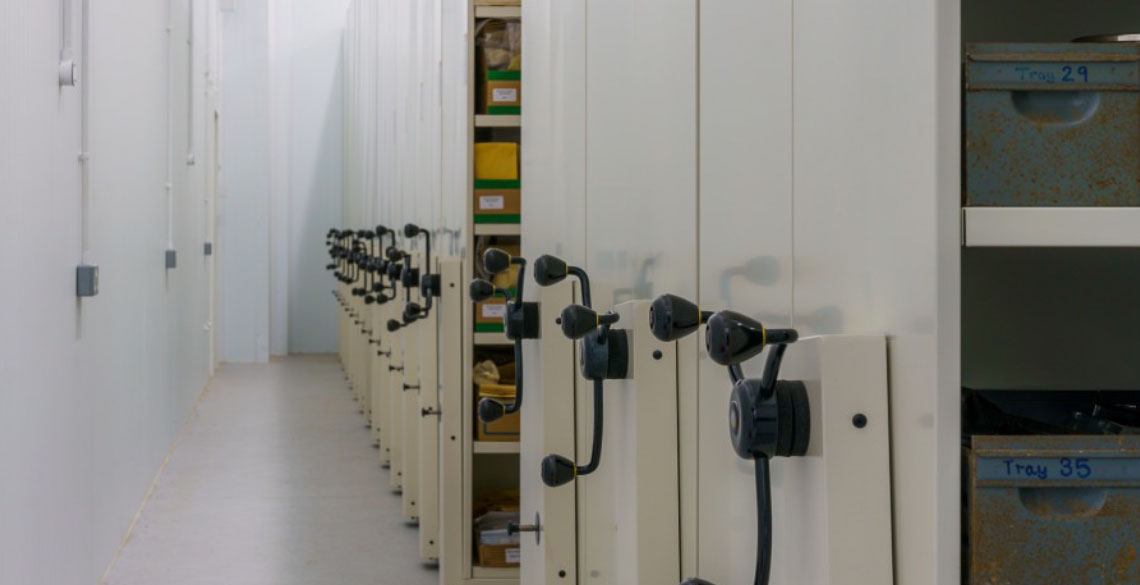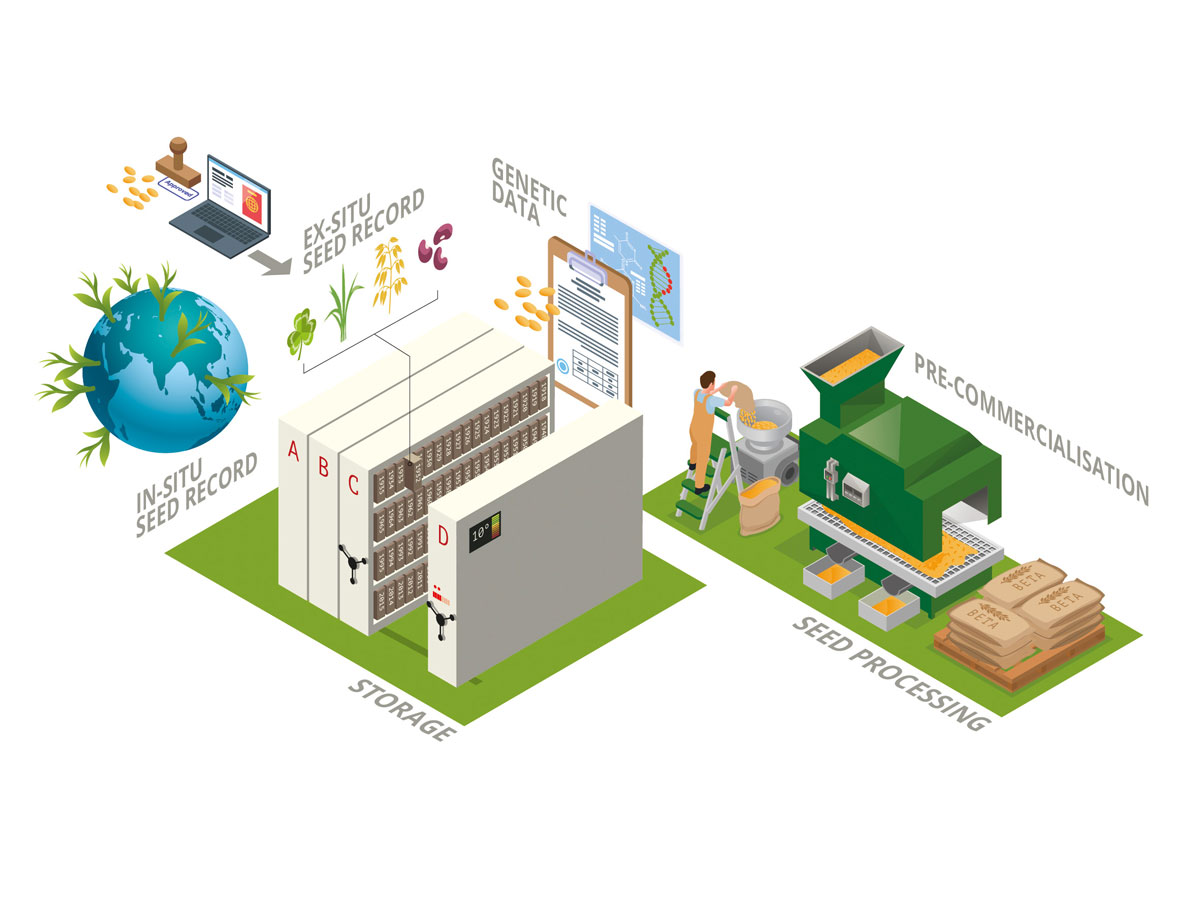The IBERS Seed Bank

IBERS Seed Bank
At the heart of the institute, the IBERS Seed Bank safeguards one of the world's largest collections of seeds from grasses, clover, oats and miscanthus. Wild plant seed from all over the world has been collected and stored at the institute since 1918. The Seed Bank currently holds over 35,000 accessions and is designed to provide safe storage of plant material for 100 years or more; safeguarding genetic resources for study and use by future generations of plant scientists and breeders around the world.
The IBERS Seed Bank is one of only a few quarantine facilities in the UK permitted to handle exotic plant material and manages plant passport data for these collections. The facility also manages the UK National Inventory and contributes to international genetic resources databases, such as the European EURISCO catalogue and the Genesys global gene-bank, established by the FAO to conserve crop diversity and keep crop genetic resources available globally for the future benefit of mankind.

Safeguarding biodiversity in-situ and ex-situ
Traditionally, gene banks have focussed on ex-situ conservation methods that use breeding and maintenance of species outside their natural ecosystems. This has been a vital means of protecting endangered species and safeguarding genetic resources, but those genetic resources can become effectively frozen in time, and large populations of a species are not able to continue to thrive and adapt. The IBERS team has been working closely with UK and the European community on developing in-situ conservation approaches that conserve biodiversity in its natural habitat. Helping to protect biodiversity and help it to thrive where it belongs and naturally strengthening ecosystems.
Genomics - Supporting plant genetic research and crop breeding.
Our genomics research helps us better understand the genetic diversity of our crops, how genes regulate their growth and determine specific traits or characteristics. Our cutting-edge research programme is using a pangenome approach to look at commonalities and differences in genomes across different varieties within a genus, building a wider understanding of genetic diversity as a resource. Helping to breed varieties that can perform in challenging conditions in current and future climates.
➡ Find out more about the IBERS genetic resources and the biobank history here.
